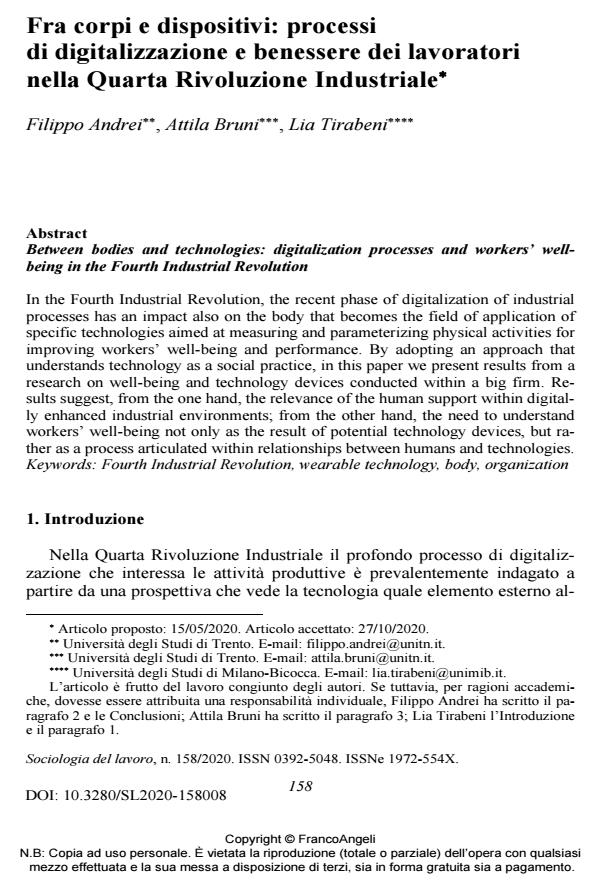Fra corpi e dispositivi: processi di digitalizzazione e benessere dei lavoratori nella Quarta Rivoluzione Industriale
Titolo Rivista SOCIOLOGIA DEL LAVORO
Autori/Curatori Filippo Andrei, Attila Bruni, Lia Tirabeni
Anno di pubblicazione 2020 Fascicolo 2020/158
Lingua Italiano Numero pagine 20 P. 158-177 Dimensione file 242 KB
DOI 10.3280/SL2020-158008
Il DOI è il codice a barre della proprietà intellettuale: per saperne di più
clicca qui
Qui sotto puoi vedere in anteprima la prima pagina di questo articolo.
Se questo articolo ti interessa, lo puoi acquistare (e scaricare in formato pdf) seguendo le facili indicazioni per acquistare il download credit. Acquista Download Credits per scaricare questo Articolo in formato PDF

FrancoAngeli è membro della Publishers International Linking Association, Inc (PILA)associazione indipendente e non profit per facilitare (attraverso i servizi tecnologici implementati da CrossRef.org) l’accesso degli studiosi ai contenuti digitali nelle pubblicazioni professionali e scientifiche
Nella Quarta Rivoluzione Industriale il profondo processo di digitalizzazione che interessa le attività produttive si riflette anche sul corpo, che diviene il campo di applicazione di tecnologie orientate a misurare e parametrizzare le attività fisiche, così da migliorare il benessere e le performance dei lavoratori. Sulla scorta di un approccio che guarda alla tecnologia quale pratica sociale, in questo contributo presentiamo i risultati scaturiti da una ricerca su benessere e dispositivi tecnologici condotta in una grande azienda manifatturiera. I risultati suggeriscono, da un lato, la rilevanza dell’azione umana in contesti di digitalizzazione e, dall’altro, la neces-sità di guardare al benessere dei lavoratori non tanto come risultato dell’azione di eventuali dispositivi tecnologici, quanto quale processo che si articola nelle rela-zioni che si instaurano fra umani e tecnologie.
Parole chiave:Quarta Rivoluzione Industriale, tecnologia indossabile, corpo, orga-nizzazione
Filippo Andrei, Attila Bruni, Lia Tirabeni, Fra corpi e dispositivi: processi di digitalizzazione e benessere dei lavoratori nella Quarta Rivoluzione Industriale in "SOCIOLOGIA DEL LAVORO " 158/2020, pp 158-177, DOI: 10.3280/SL2020-158008